

CPL Visits Complex Plasma Research in China
As one of the participating countries in ITER, China has shown great interest in the field of Plasma Physics. And in the last two years, over ten laboratory groups and education institutes have setup research activities and lecture courses across China just on the topic of complex plasma alone. There are three major centers of complex plasma research in China:

Loosely speaking, Beijing can be considered as the experimental leader, Dalian as the simulation leader, and Hefei as the theoretical leader of complex plasma research in China. CPL was invited to give talks in Beijing, Dalian, and Hefei in July last year. We will give a brief introduction on the research status of complex plasma in these three Chinese cities here.
Beijing

The Chinese Academy of Sciences (Chinese: 中国科学院; pinyin: Zhōngguó Kēxuéyuàn), or CAS, is the national academy for the natural sciences of the People's Republic of China. It is an institution of the State Council of China and is the highest science research organization in China. The government gives the money directly to the academy. It is headquartered in Beijing, with institutes all over China. CAS has branch across cities including Shenyang, Changchun, Shanghai, Nanjing, Wuhan, Guangzhou, Chengdu, Kunming, Xi’an, Lanzhou and Xinjiang, etc. CAS has 84 institutes, one university (the University of Science and Technology of China at Hefei), two colleges, four documentation and information centers, three technology support centers and two news and publishing units.
Within CAS, there are two institutes which are currently conducting researchs in complex plasma. In particular, Dr. Fang Li has been one of the pioneers in the research of complex plasmas, and has participated in the first three International Conference on the Physics of Dusty Plasma. In addition, they have close contacts with Beijing Normal University in simulation work.
- Institute of Electronics
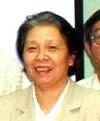
Dr. Fang Li
Principal Investigator
Attended ICPDP1 (Goa, India), 2 (Hakone, Japan) & 3 (Durban, South Africa)
Email: fli@mail.ie.ac.cn
Research interest includes: space plasma, dusty plasma (theory [began in 1994]), radio wave propagation
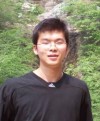
Chen-Jing Jiang
Master Student
Email: jiangchj@gmail.com
Research interest includes: dusty plasma (simulation), polar mesosphere summer echoes (PMSE)
- Institute of Physics
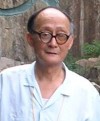
Prof. Long Wang
Principal Investigator
Email: wanglong@aphy.iphy.ac.cn
Research interest includes: sonoluminescence, dusty plasma (experiment & simulation), atmospheric chemistry, molecular dynamics simulation
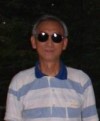
Prof. Mao-Fu Ye
Principal Investigator
Email: mfye@aphy.iphy.ac.cn

Dr. Feng Huang
PhD Student (just completed)
Email: huangf@aphy.iphy.ac.cn
Research interest includes: dusty plasma (experiment) - dust rotation, dust clusters, waves, voids, vortices, thin film with low dielectric constant
- Beijing Normal University
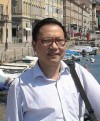
Dr. Bai Song Xie
Principal Investigator
Currently funded by NFSC
Email: bsxie@bnu.edu.cn
Research interest includes: dusty plasma (theory & simulation), dust acoustic waves (DAW) in strongly coupled dissipative system, instabilities, molecular dynamics simulation
This is the experimental setup at the Institute of Physics built by Dr. Feng Huang:
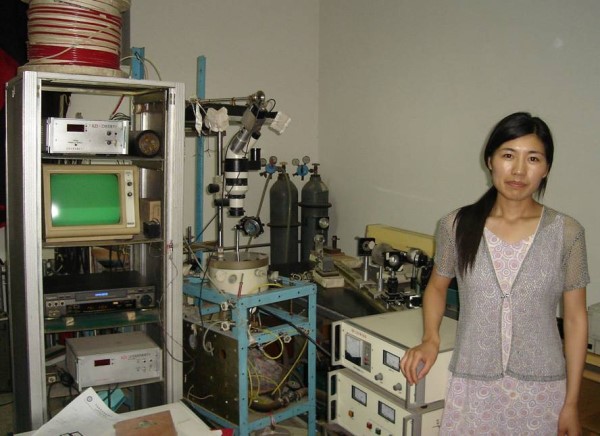

Specifications
Capacitively coupled rf discharge,
Chamber = D 22cm × H 7cm,
Inner electrode = D 7m × H 1.6cm,
Outer electrode = D 10cm x H 1.8cm, SiH4/Ar (ratio 1:19) + C2H4,
Particle size = 10 to 100nm,
Pressure = 750mTorr,
Power RF p-p = 300W@13.56MHz
The particles are introduced into the system via reactive gas mixtures. By mixing silane and ethylene gases at different proportions, we can get particles of various size distribution.

Using the apparatus, various dust structures (clouds, crystals, clusters, fractals) and dust dynamics (melting, waves, rotation, vortex) have been observed.

Here is a vertical profile of a dome-shaped void observed in experiment.
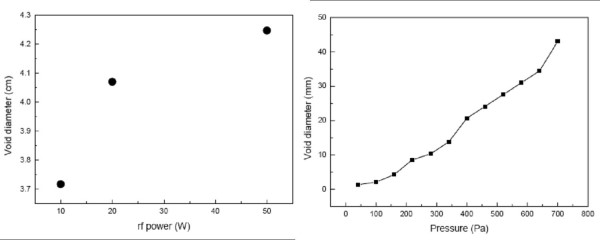
Void diameter versus rf power and pressure.

Here is a vertical profile of a shell-shaped void observed in experiment.
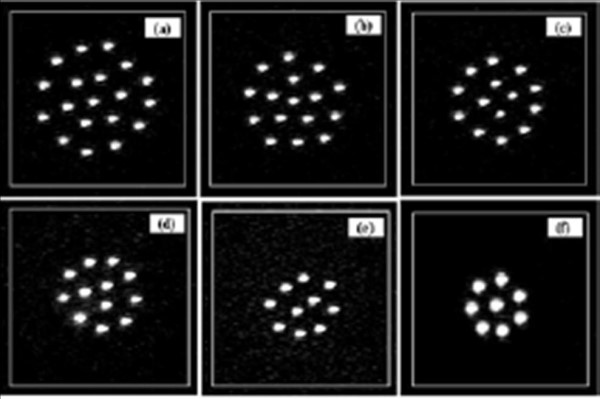
Clusters of one up to few tens of particles have been observed.
Next: Complex Plasma Research in Dalian>>
18/01/2006



FastCounter by bCentral